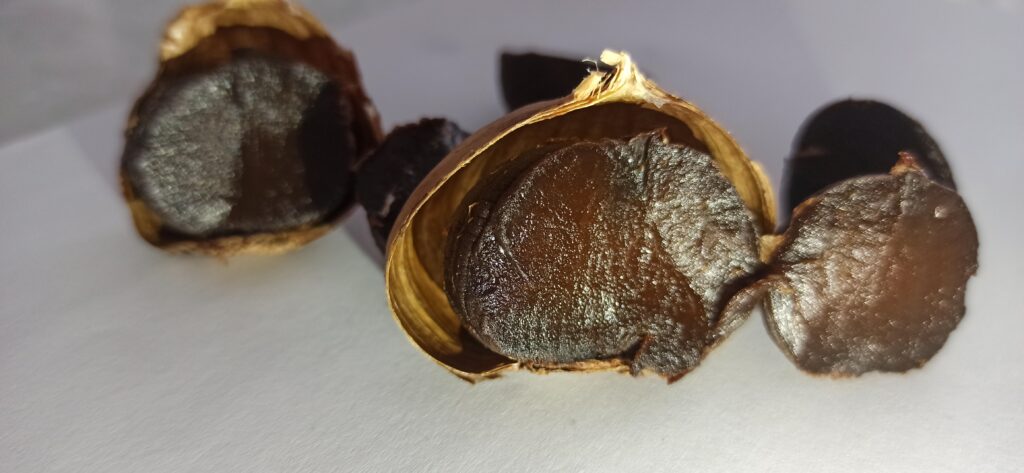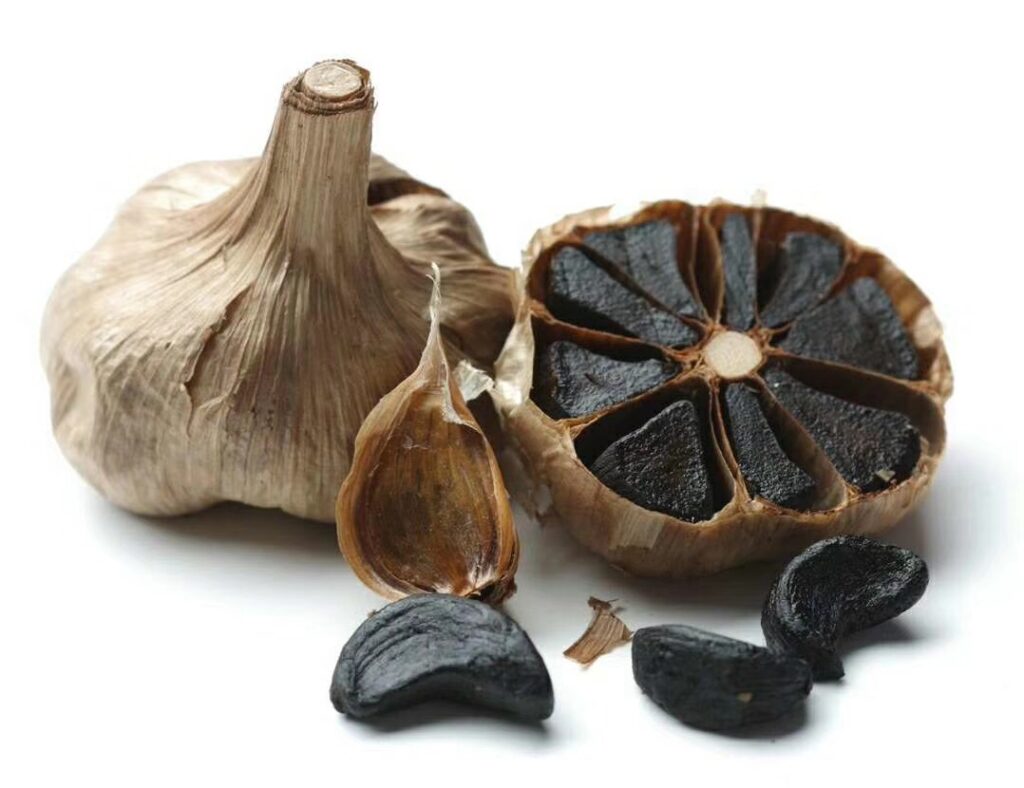Black garlic super-tasty
black garlic have a lot of taste when you eat different suppliers,
what black garlic taste like? do you know the real black garlic looks like?
Black garlic has a soft taste, sweet and sour without irritation.
After eating black garlic, it is as soft as jelly, and it does not have the unique smell of raw garlic after eating, and it will not cause adverse irritation to the stomach.
In order to keep the garlic granules a lot of moisture, it is kept in a moist state during the whole production process, and its appearance is similar to that of preserved fruit. This is because the protein contained in garlic is decomposed into amino acids, carbohydrates are decomposed into fructose, and the alliin contained in garlic is completely retained after long-term fermentation and aging.


Out side of black garlic should be black , but center of bulbs, if want it sweetter, should be brown, thats perfect,
Why Humans Love the Taste of Black Garlic
The unique flavor and texture of black garlic have gained widespread popularity. Its appeal can be explained from scientific, cultural, and sensory perspectives:
1. Transformation of Flavor Compounds
Black garlic is produced by fermenting fresh garlic in a high-temperature, high-humidity environment (through non-enzymatic browning, the Maillard reaction). This process creates numerous new flavor compounds:
- Enhanced sweetness: Polysaccharides in garlic break down into monosaccharides like fructose and glucose, significantly increasing sweetness (black garlic can be up to 10 times sweeter than fresh garlic).
- Balanced acidity: Organic acids like lactic acid and succinic acid produced during fermentation contribute a mild sourness that complements the sweetness.
- Reduced bitterness: Pungent sulfur compounds (like allicin) transform into aromatic sulfur compounds (such as tetrahydrothiophene), eliminating the sharp bite and leaving caramelized, fruity notes.
2. Texture Transformation
- Soft, sticky texture: Fermentation breaks down garlic’s fibrous structure and degrades pectin, resulting in a jelly-like, melt-in-your-mouth consistency.
- No irritation: The spicy, pungent quality of raw garlic disappears completely, making it gentle on oral membranes and suitable for all ages.
3. Umami Explosion
Black garlic contains significantly higher levels of free amino acids (especially glutamate), with umami intensity 3-5 times that of fresh garlic. This natural umami synergizes with sweetness to trigger pleasurable brain responses (similar to the mechanism behind soy sauce, cheese, or ripe tomatoes).
4. Evolutionary Sensory Preferences
From an evolutionary psychology perspective, humans are naturally drawn to these taste characteristics:
- High-energy signals: Sweetness and umami suggest the food is rich in carbohydrates or protein.
- Moderate complexity: Black garlic’s layered flavors (sweet, umami, slightly sour) are more intriguing than single-note tastes, similar to the appeal of fermented foods like soy sauce or wine.
5. Cultural Perception and Health Halo
- “Superfood” labeling: Black garlic is marketed as an antioxidant-rich, immunity-boosting superfood, which may psychologically enhance taste acceptance.
- Novelty drive: Its unconventional flavor profile activates the brain’s reward system, particularly appealing to adventurous eaters.
6. Supporting Evidence from Studies
Blind taste tests show that most participants rate black garlic as “more delicious” due to its higher composite scores (sweetness, umami, mildness) compared to raw garlic. However, preferences vary—some may find it overly sweet or intense.